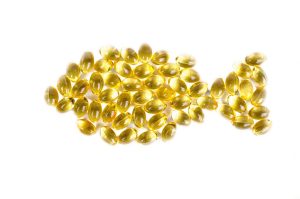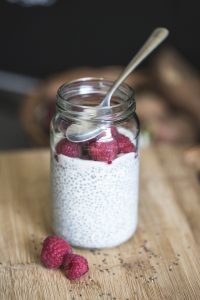What Everybody Ought To Know About Fish Oil
 If you’re one of the millions of people who take fish oil, you probably take it for a specific ailment. Fish oil contains omega-3 fatty acids that can improve heart and brain health. The body requires omega-3 to function properly, but it cannot produce it, so it must come from food. It can aid in treating conditions such as depression, asthma, some autoimmune diseases, ADHA, and rheumatoid arthritis. A study at one of the most dangerous prisons in the UK found that increasing omega-3 and providing a nutrient-dense diet significantly reduced violent acts.
If you’re one of the millions of people who take fish oil, you probably take it for a specific ailment. Fish oil contains omega-3 fatty acids that can improve heart and brain health. The body requires omega-3 to function properly, but it cannot produce it, so it must come from food. It can aid in treating conditions such as depression, asthma, some autoimmune diseases, ADHA, and rheumatoid arthritis. A study at one of the most dangerous prisons in the UK found that increasing omega-3 and providing a nutrient-dense diet significantly reduced violent acts.
Not all omega-3 supplements are equal.
The omega-3 in fish oil is different from the omega-3 in flaxseed oil. Fish oil contains long-chain omega-3s, DHA and EPA. Flaxseed oil contains short-chain omega-3s—ALA. While the body can’t make any omega-3 fatty acids, it can convert ALA to DHA and EPA, but not efficiently, so you’d have to consume far more to get the amount you need. ALA from plants is also associated with prostate cancer, while DHA and EPA from fish oil aren’t.
Fish oil supplements may help relieve rheumatoid arthritis.
Fish oil may help relieve the swelling and pain from rheumatoid arthritis. One study focused on whether it could reduce the amount of anti-inflammatory drugs subject needed to relieve pain. Many of the patients in the study confirmed it did. They reported it also helped reduce the stiffness felt in the morning. The omega-3 in fish oil helps reduce the inflammatory cytokines that signal the immune system to attack without affecting the correct balance of T-cells, white blood cells that protect the body from bacteria, viruses, and other invaders.
You might boost your brain, heart, and eye health with fish oil.
Even though omega-3 fatty acids play an important role in heart, brain, and eye health, there’s no concrete evidence that taking omega-3 supplements is beneficial. When you consume food, all the nutrients in the food act in synergy in many cases, improving the benefits of all of them. The AHA—American Heart Association—recommends eating fish but doesn’t recommend fish oil supplements. They found the supplements only beneficial for people with specific types of heart disease.
- Another reason consuming food with omega-3 may be better than taking supplements considers what you don’t eat. If you’re eating fish, you aren’t eating foods that aren’t beneficial to the heart or even harmful.
- There’s conflicting evidence on whether taking omega-3 fatty acids can help prevent age-related eye disease and age-related cognitive decline. There was no evidence showing it prevented the problems.
- Omega-3 fish oil supplements are being studied for a variety of conditions, including allergies, diabetes, asthma, obesity, Crohn’s, and osteoporosis. The studies haven’t proven or disproven the fish oil benefits.
- Even though the prison study on the effects of omega-3 and aggression showed benefits, it doesn’t mean fish oil supplements can help. Consuming fish or other sources of omega-3 is the best way to get the healthiest results.
For more information, contact us today at Rising Fitness Gym



 There are a lot of food fads that circulate in Houston, TX, and not all of them are healthy. Luckily, the latest fad of using chia seeds in recipes is different. These tiny seeds are power-packed and ready to provide not only health benefits but also some benefits for your recipes. Using chia seeds in food isn’t new. It was a mainstay of the Mayan and Aztec diet. These tiny seeds may not look impressive but when you include them regularly in your diet, you’ll get impressive results.
There are a lot of food fads that circulate in Houston, TX, and not all of them are healthy. Luckily, the latest fad of using chia seeds in recipes is different. These tiny seeds are power-packed and ready to provide not only health benefits but also some benefits for your recipes. Using chia seeds in food isn’t new. It was a mainstay of the Mayan and Aztec diet. These tiny seeds may not look impressive but when you include them regularly in your diet, you’ll get impressive results.
 As the workday extends, hunger can build. If you’re at work, there may be options for snacks such as a vending machine, a coworker’s stash of candy, or donuts or cookies brought for the whole staff. Most of the options aren’t healthy or low-calorie. How do you fight that urge to eat the last four donuts or raid the secretary’s candy bowl? You don’t let temptation build. Take healthy snacks with you. It doesn’t mean you can’t ever have a thin slice of Havey’s birthday cake or an M&M occasionally. It means you’ll have more control daily and be less apt to eat high-calorie snacks.
As the workday extends, hunger can build. If you’re at work, there may be options for snacks such as a vending machine, a coworker’s stash of candy, or donuts or cookies brought for the whole staff. Most of the options aren’t healthy or low-calorie. How do you fight that urge to eat the last four donuts or raid the secretary’s candy bowl? You don’t let temptation build. Take healthy snacks with you. It doesn’t mean you can’t ever have a thin slice of Havey’s birthday cake or an M&M occasionally. It means you’ll have more control daily and be less apt to eat high-calorie snacks.
 Obesity has reached epidemic levels, even in Houston, TX. Lack of exercise and an unhealthy diet are the primary causes, even though there are others. Most fitness centers, weight loss programs, or personal trainers use exercise or diet as a solution. We focus on both diet and exercise. The food you eat and its preparation are key to weight loss. Highly processed foods are bland. Manufacturers improve flavor by adding salt and sugar. Most people understand how sugar adds pounds but fail to realize that salt can also sabotage weight loss efforts.
Obesity has reached epidemic levels, even in Houston, TX. Lack of exercise and an unhealthy diet are the primary causes, even though there are others. Most fitness centers, weight loss programs, or personal trainers use exercise or diet as a solution. We focus on both diet and exercise. The food you eat and its preparation are key to weight loss. Highly processed foods are bland. Manufacturers improve flavor by adding salt and sugar. Most people understand how sugar adds pounds but fail to realize that salt can also sabotage weight loss efforts.
 It’s normal to have muscle soreness from exercise, especially if you’re pushing yourself to the limit. There are ways to speed recovery and diminish the pain. You do have to watch out for severe DOMS——-delayed onset muscle soreness—that reaches peak pain between 24 and 48 hours after exercise but can start as soon as six hours after exercise. When you workout the muscles develop small tears that require time to repair. The repairs build both muscle and strength. Until the process is complete, you’ll feel pain. You can diminish the potential pain or speed the healing with these ideas.
It’s normal to have muscle soreness from exercise, especially if you’re pushing yourself to the limit. There are ways to speed recovery and diminish the pain. You do have to watch out for severe DOMS——-delayed onset muscle soreness—that reaches peak pain between 24 and 48 hours after exercise but can start as soon as six hours after exercise. When you workout the muscles develop small tears that require time to repair. The repairs build both muscle and strength. Until the process is complete, you’ll feel pain. You can diminish the potential pain or speed the healing with these ideas.
 Traditional tools to build strength include barbells and dumbbells. Many people in Houston, TX, focus only on those tools and ignore some less-used options like resistance bands or kettlebells. Resistance bands are inexpensive latex bands. They come in many sizes to match various workout levels. When you stretch them, they provide the resistance that helps build strength. Initially, physical therapists used resistance for rehabilitation. Today they are exercise tools, particularly for those who travel or on the days access to the gym is impossible.
Traditional tools to build strength include barbells and dumbbells. Many people in Houston, TX, focus only on those tools and ignore some less-used options like resistance bands or kettlebells. Resistance bands are inexpensive latex bands. They come in many sizes to match various workout levels. When you stretch them, they provide the resistance that helps build strength. Initially, physical therapists used resistance for rehabilitation. Today they are exercise tools, particularly for those who travel or on the days access to the gym is impossible.
 Occasionally eating a small slice of cake or pie won’t affect your weight loss program much. However, if you eat an entire pie or cake and do it every day, you won’t lose weight. Portion control plays a vital role in weight loss. Portion control is more important for some foods than it is for others. For instance, you can eat as many leafy green vegetables as you want without worry but need to watch portions when consuming higher-calorie foods, even if they are fruit or vegetables. Avocados are one example and nuts are another where portion control makes a difference.
Occasionally eating a small slice of cake or pie won’t affect your weight loss program much. However, if you eat an entire pie or cake and do it every day, you won’t lose weight. Portion control plays a vital role in weight loss. Portion control is more important for some foods than it is for others. For instance, you can eat as many leafy green vegetables as you want without worry but need to watch portions when consuming higher-calorie foods, even if they are fruit or vegetables. Avocados are one example and nuts are another where portion control makes a difference.
 Many recent studies show that gut health makes weight loss easier. The microbiome in the gut impacts your gut health directly. There are millions of them and a variety of species. They include bacteria, viruses, fungi, and other microscopic organisms. They dramatically affect all functions in the body, including gut health. While there are debates on the number of microbes in the body, Scientists agree there are more microbes than cells in our body.
Many recent studies show that gut health makes weight loss easier. The microbiome in the gut impacts your gut health directly. There are millions of them and a variety of species. They include bacteria, viruses, fungi, and other microscopic organisms. They dramatically affect all functions in the body, including gut health. While there are debates on the number of microbes in the body, Scientists agree there are more microbes than cells in our body.
 Do you have dreams of eating cakes and pastries and never gaining weight? The truth is, you can’t. However, there is food you can have in an unlimited amount. Some foods are lower in calories, while others have a thermogenic effect. When your body digests food, it takes extra energy. Some types of food require more energy to digest than others. Food like celery is already low in calories and when you factor in the thermogenic effect, it is even lower and may be negative calories.
Do you have dreams of eating cakes and pastries and never gaining weight? The truth is, you can’t. However, there is food you can have in an unlimited amount. Some foods are lower in calories, while others have a thermogenic effect. When your body digests food, it takes extra energy. Some types of food require more energy to digest than others. Food like celery is already low in calories and when you factor in the thermogenic effect, it is even lower and may be negative calories.
 At Rising Fitness, we use a holistic approach to good health. The body requires exercise but also needs a healthy diet to reduce the risk of disease. A healthy diet contains many components, including macronutrients, micronutrients, and phytonutrients. Macronutrients include protein, fat, and carbohydrates, while micronutrients include vitamins and minerals. Phytonutrients are substances found in plants that improve the functioning of the body.
At Rising Fitness, we use a holistic approach to good health. The body requires exercise but also needs a healthy diet to reduce the risk of disease. A healthy diet contains many components, including macronutrients, micronutrients, and phytonutrients. Macronutrients include protein, fat, and carbohydrates, while micronutrients include vitamins and minerals. Phytonutrients are substances found in plants that improve the functioning of the body.